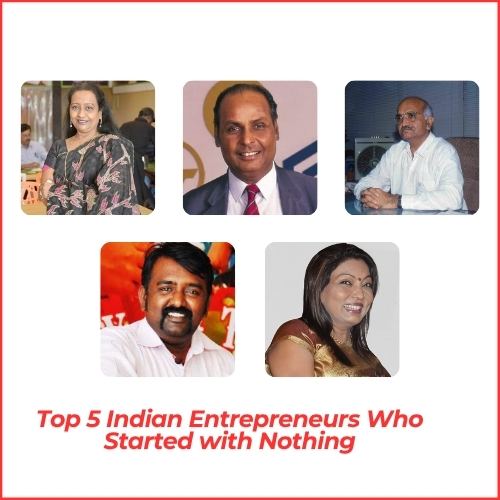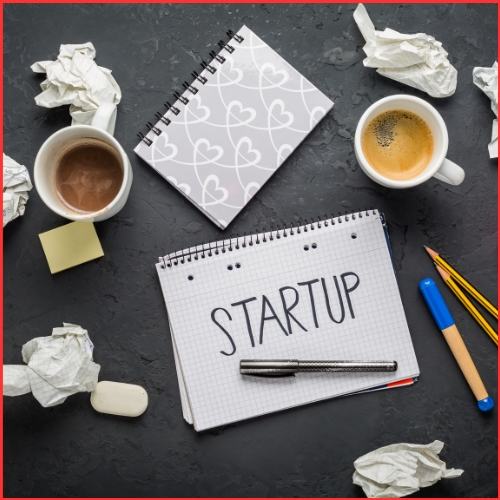New businesses get surfaced every now and then. They start with initial planning and strategy in mind and move forward addressing each challenge one at a time. It is extremely difficult to put an idea into action and work on it to make it better with the passing of each day. We have seen different eras of development over the last decade. Within the dot com boom in the 1990s to web 2.0 and currently blockchain with web 3.0. Businesses are adapting according to the trends run by the internet. It is crucial for every business to run alongside by side with evolutions of time. Today, public privacy and decentralized platforms are paving a fresh pattern of systems.
Mental health and awareness are being prioritized more than corporate culture and people are actually looking to settle for less stressful jobs in order to spend their time with their families. But on the other hand, businesses need to run and they are embracing the idea of flexible job roles to retain the employees. The beauty of an incredible idea is entirely personal and close to someone’s heart. If that idea turns into a meaningful project which has the capabilities of a promising business, then the idea is oftentimes invaluable.
But this comes with a lot of hurdles. Ideas are required to be safeguarded with some security protocols. The idea should be trademarked and legally protected. Sometimes there are lapses in the steps and that leads to the idea being taken by copy-cat entrepreneurs. These people keep a close watch on the market and replicate any product or business model that has some possibilities to be successful.
CopyCat Entrepreneurs
CopyCat Entrepreneurs have the desire to acquire a portion of the market by copying ideas from others. The method of replicating a business is not entirely unethical. A business being copied proves to be beneficial for a competitive market.
Companies like Uber and Lyft, Dominos and Pizza Hut, McDonald’s, and Burger King are all businesses that share ideas that are similar to one another. These companies coexist together and they put efforts into their business to make it more preferable for the customers. If an idea shows the ability to thrive as a successful business, imitators will look forward to it. Inspiration and imitation have a thin line. Sometimes it is you who inspires people and the other times you get inspired by others.
There is no point in fighting for your idea. But what you can do is to protect as much as possible with some provisional patents. In the earlier days, businesses used to patent every tiny element of their businesses. Now, there are hundreds of startups and businesses in the online space which have features and aspects that match some other ideas.
CopyCat Business Model
A Copycat Business Model has the opportunity to improve on an idea with further innovative techniques. The necessity to sign an agreement of non-disclosure only applies to employees, investors, software developers, or anyone who is authorized to access company information. Other than these people there can be several instances where you might be required to explain your ideas to someone. For an entrepreneur with a fresh business idea, it is important to restrict oneself from unnecessary noise. Optimism and positivity will go a long way if you concentrate more on the growth of your business.
Copycat Businesses rely heavily on the innovation and exclusivity of other businesses. They take all the positive aspects of the original idea and build a platform to gain more market shares as possible. It is imperative that leaders with a vision should look ahead and not what is happening behind their back.
Here are some Copycat Business examples with their ideas shared with other companies:
1. Instagram and Snapchat:
Instagram is an online photo and video sharing and editing platform founded by Kevin Systrom and Mike Krieger in the year 2010. The American company was later bought by Facebook. With the help of the platform or app, users can log in to their accounts and upload content like photos and videos. Hashtags can be used in the caption of these contents to sort them according to the right audience. These contents are shared openly with the public or with the accepted followers of a user. These videos and photos can also be seen by others from a different locations by filtering the specific region of the content or by browsing through content that is trending.
Originally, the app allowed the users to post content in a ratio of 1:1, which is about 640 pixels. That was united with the iPhones at that time. But as technology progressed, the specifications increased to 1080 pixels. Instagram also started a feature where users can message each other, and post multiple contents like pictures and videos in a single upload and Instagram Stories. Instagram Stories resembles a lot like Snapchat’s method where the post will be visible for only 24 hours. This feature is used on a daily basis by 500 million users globally. Instagram was initially offered only to iOS users in the year 2010. Within a mere two months of introduction, the platform has registered about 1 million users.
Gradually, Instagram gained more popularity among the public and there were about 10 million people using the app after a year. By the year 2018, Instagram recorded about 1 billion users. Facebook acquired the social media services in 2012 for about $ 1 billion in the form of stocks and money. The app’s Android version was released in 2012 which then followed an interface for desktops. In the year 2014, an operating system of the app based on Fire was released which was followed by an app for Windows that happened in 2016. More than 40 billion of content including photos and videos were uploaded to Instagram by the year 2015. Instagram started in San Francisco with the name ‘Burbn’.
But at the time, the platform shared similarities with Foursquare and the founders shifted towards a platform based on sharing photos, which is a popular aspect of the app. The name ‘Instagram’ is a mixture of ‘telegram’ with ‘instant camera’. The initial funding of about $ 500,000 was closed by Systrom with Baseline Ventures along with Andreessen Horowitz. Josh Riedel was hired to the team as a community manager along with Shayne Sweeney as an engineer and Jessica Zollman as Community Evangelist in 2011.
Mike Krieger posted the very first photo on Instagram of the harbor at South Beach which was located at Pier 38. Later that day, which was the 16th of July in 2010, Systrom uploaded a photo of the foot of his girlfriend with a dog. In 2011, Instagram was able to raise funding of about $ 7 million from eminent investors like Benchmark Capital and Jack Dorsey. Chris Sacca along with Adam D’Angelo was also involved in the funding. This took Instagram’s valuation to $ 20 billion. In 2012, Instagram gathered $ 50 million from investors with a valuation of about $ 500 million. Joshua Kushner of Thrive Capital was among one of the largest investors of Instagram. The acquisition of Facebook doubled Joshua’s investment.
Snapchat is an instant messaging platform built by Snap Inc which is known as Snapchat Inc. The most important aspect of Snapchat is that contents like a message or pictures are accessible to the receivers for a limited amount of time. The initial approach of the app was focused on sharing photos between users. Now, the ‘Stories’ feature of Snapchat arranges content in a chronological order that will be present for 24 hours. The ‘Discover’ feature of the platform promotes ad-based content which is short in length. The platform has a feature where users can secure their photos with a password. The usage of encrypted data is also being considered by Snapchat for further use in a later period.
Snapchat was founded by Evan Spiegel, Bobby Murphy, and Reggie Brown. They are alumni of Stanford University. Snapchat has an approach that is heavily drawn toward mobile apps and it put a good amount of significance on digital stickers and objects made from augmented reality. Snapchat recorded that in 2021, it had about 293 million users registered to the platform. That is about 23% more growth over the previous year. The platform had logged about 4 billion snaps shared on a daily basis.
The age of these users is generally below 16 years, which creates a lot of concerns for the parents. Reggie Brown came up with the idea of sharing photos on a platform that will have a limited span for viewing it. Reggie shared the idea with Evan Spiegel who had some experience in the business. Both of them then took Bobby Murphy into the team, since Bobby was an expert in coding. The three of them then launched the app named ‘Picaboo’ in 2011 and made it available on the iOS platform. The name ‘Snapchat’ was later given to the app in the year 2011. The team focused more on improving the platform rather than marketing the product.
Snapchat aimed to create a community that was more than just an instant Kodak capture. During the month of May in 2012, 25 snaps were shared every second. This grew to about 20 million by November of the same year. In 2012, Snapchat was introduced to the Android interface. In the following year, Snapchat made a lot of design and software improvements to offer quality interactive approaches for its users. Features like an enhanced friend locator, swipe navigation, and in-app user profile updates. In 2015, data showed that about 2 billion videos were being shared each day.
Snapchat offered about $ 1.81 billion in shares to investors who were willing to join the team. In 2016, Snapchat officially changed to Snap Inc due to the introduction of a hardware product offered by the company. This product was a smart glass that had a camera fitted to it which can record a video of 10 seconds.
2. Sega and Nintendo:
Sega Corporation is a multinational company based on video games that have headquarters in Shinagawa, Tokyo. They have international offices in the United States and Europe. The United States offices are in California and the Europe office is based in London. The branch of arcade games and video games in homes, Sega Games, has now been divided into another entity it called Sega Interactive Co. Ltd. Sega Group Corporation has the subsidiary Sega, which is a part of Sega Sammy Holdings.
Sega was founded by Martin Bromley and Richard Stewart in the name of Nihon Goraku Bussan. In 1960, the company soon acquired the stakes of Service games of Japan, which was the predecessor of the company. After five years the company changed its name to Sega Enterprises Ltd after it acquired Rosen Enterprises. Rosen Enterprises imported games that ran on coins. In 1966, Sega introduced ‘Periscope’ as a game that can be operated with a coin. In the early 80s, Sega started to manufacture gaming consoles like SG-1000 and products like Master System.
But they had a tough time competing against Nintendo Entertainment. The Sega Genesis, which was also known outside North America as Mega Drive, was launched in 1988. Genesis had challenges against competitors in Japan, but with the release of ‘Sonic The Hedgehog’ in 1991, Sega outsold marginally Super Nintendo Entertainment. In 2004, Sega was acquired by Sammy Corporation. Sega Holdings Co. Ltd. was formed in 2015 and the name Sega Games Co. Ltd replaced Sega Corporation. Million-dollar franchises in the gaming industry like Yakuza, Total War, and Sonic the Hedgehog are all from Sega.
The arcade games division of Sega is world-famous with series like Virtua Fighter and many more. The name is used for affiliate purposes by several companies that manufacture entertainment products. Sega is mostly known for its creative approach, innovation, and gaming consoles in the format of videos.
Nintendo was founded by Fusajiro Yamauchi in 1889. Nintendo’s original product was hanafuda cards used for playing. In 1960, the company expanded its portfolio of business into other products and also became public. In 1977, Nintendo launched the Color TV Gaming system, which was the console distributed by the company. The company achieved huge popularity with the introduction of Donkey Kong, which was released in 1981. The Nintendo Entertainment System and Super Mario came to the market in 1985 and created a lot of appreciation for themselves.
Some of the most popular consoles that gained success are Game Boy, Super Nintendo, Nintendo DS, Switch, and many more. Impeccable franchises were created by Nintendo like Mario, Donkey Kong, Pokemon, Metroid, Animal Crossing, Kirby, Legend of Zelda, Star Fox, Super Smash Bros, and so many others. Mario is the mascot of Nintendo and is globally popular. There are several subsidiaries of the company which are based in Japan and internationally. The Pokemon Company and HAL Laboratory are two popular business partners.
Awards like Emmy Awards for Technology and Engineering, Game Awards, British Academy Games Awards, and several others are being given to employees of the company for their innovation and contribution to the gaming industry. Nintendo is Japan’s one of the most valuable companies. The most prominent product of Nintendo is video gaming consoles, card games, and products that are hardware-based. These products undergo several steps of research and development which are then forwarded for production and distribution.
Nintendo’s prime markets are Japan along with America and Europe which provide the most revenue of the company. The gaming consoles division started with the launch of the Color TV Game, which came out in 1977. The company has manufactured and distributed several handhelds and hybrid gaming consoles over the years. With all these consoles, the accessories are also personalized like the NES Zapper, Super NES Mouse, Wii Motion Plus, and several others. EVR Race was released in 1975 as the first arcade electronic game by Nintendo.
Donkey Kong was launched in 1981 as the first game with a platform. Several companies have partnered with Nintendo to provide games for their consoles. The games provided by Nintendo come in formats like optical discs and also in digital form in Nintendo’s eStore and on the Nintendo Network.
3. Apple and Xiaomi:
Apple is an American technology-focused company that offers consumer electronics products, software, and other online services. The company was founded by Steve Jobs with engineer and programmer Steve Wozniak and a businessman named Ronald Wayne. Apple is the largest IT company out there in the world with a net worth of about $ 365.8 billion as of 2022. It also ranks second in value among the companies present in the world. Apple stands fourth as a vendor for personal computers in sales. The iPhones manufactured by the brand make Apple the second-largest manufacturer of mobile phones. It is one of the five major companies in the field of information technology in America that stands strong along with Amazon, Meta, Microsoft, and Alphabet.
Apple Computer Company was the first name given to the company in 1976 when the company sold the computer used personally by Wozniak as the Apple I. The next device launched was Apple II, which became extremely popular and became a bestseller at the time. In 1980, the company went public as it witnessed success financially. Apple is dedicated to providing its customers with innovative and high-quality products at the best price possible.
The Mackintosh, which was the original version, portrayed beautiful technical craftsmanship at the time. With the passage of time, the applications of a personal computer expanded and Apple faced several challenges with the inexpensive Microsoft Windows PC which provided reliable personal computers at a lower price. Over the years, Steve Jobs led Apple with a vision that encourages new ideas and innovation. He helped Apple create interesting products like the iPod, which was a device that stored songs, iMac, which is a personal computer system, iPhone, which is the world-known mobile phone and the iPad, which shares the same interface with the iPhones but has a much larger display for the better portable experience.
Steve Jobs also opened Apple stores to provide the availability of Apple products in an offline setting. Apple also acquired several companies over the years to expand its spectrum of the portfolio. Steve Jobs resigned in 2011 and was succeeded by Tim Cook, who took Apple to another great height by adapting to the new technology trending needs of the global market. Apple was valued at $ 1 trillion in 2018 followed by $ 2 trillion in 2020 and $ 3 trillion in 2022. This company surely created a legacy for itself and holds the most valuable brand in the world.
Xiaomi is a Chinese manufacturer of electronic products, household items, and software. It is known as Xiaomi Inc. in Asia. Xiaomi ranks 338 in the Fortune Global 500 list as the youngest brand to gain success. Xiaomi was founded by Lei Jun in the year 2010 by collaborating with a few senior executives. Lei Jun is a billionaire due to the success of his company which he started when was 40 years old. Lei Jun also built a company called Kingsoft and Joyo.com, which he sold for $ 75 million to Amazon in 2004. In the year 2011, Xiaomi launched its first smartphone and by 2014, the company acquired the most market shares of mobile phones in China.
In the earlier days, Xiaomi operated only online through its website and mobile apps. As they grew in value, physical stores were introduced by the company. In 2015, Xiaomi was manufacturing a wide range of consumer products. About 143 million Xiaomi phones were sold by 2020. An estimated 500 million users actively use the MI operating system. In 2021, Xiaomi became the second-largest smartphone seller surpassing Apple Inc. The company acquired a market share of about 17%. Xiaomi offers other products like smart televisions, grooming devices, backpacks, air purifiers, smartwatches, and many more. The company uses the Internet of things (IoT) and its proprietary smart home ecosystem to link its products with one another.
Xiaomi keeps the prices of the products close to the manufacturing costs and makes the products available in the market for about 18 months. Their inventory system is well optimized with flash sales and discount days to keep the inventory low. In 2021, the World Intellectual Property Organization (WIPO) reviewed that Xiaomi’s World Intellectual Property Indicator ranked second globally. About 216 designs registered in industrial design are being published by Hague Systems in 2020. Previously, they ranked third with 111 designs. During the month of February in 2022, Lei officially announced on Weibo that Xiaomi will start manufacturing premium smartphones to surpass Apple in a period of three years. The company will invest about $ 15.7 billion into research and development over the next five years.
4. Google Nest and Amazon Echo:
Google Nest is a product of smart speakers manufactured by Google that uses voice commands from its users to utilize the functions of a Google Assistant. Google Nest is integrated with both proprietary and third-party services to help users listen to music, play and control online content, receive the latest news by voice, and many more interesting services. Google Nest also promotes automation that allows users to sync other smart appliances with the products.
Google Nest also gets several updates over the years which have expanded its functionality. For example, a user can sync multiple speakers for music playback, the device has the potential to recognize and listen to commands from about six people, Google Nest provides reminders for events that are pre-scheduled in the google account, and calendar appointments are also being reminded by the device.
Amazon Echo is a set of smart speakers manufactured by Amazon. Echo devices listen to the commands of users with the help of an assistant called ‘Alexa’. Users can also use alternate names like ‘Amazon’, ‘Echo’, and any other along with Alexa, which gets activated when called by name by the user. In 2010, Amazon initiated the project ‘Echo’ in a lab called Lab126 that was based in Silicon Valley and Cambridge, Massachusetts. Initially, the Echo was limited to Amazon Prime members only. But with the advancement of time and demand, it was expanded widely to others.
Amazon Echo has received periodical updates and has improved ever since. Alexa has become a popular voice assistant that has offered several functions to the customers. The Echo brand is heavily connected with the cloud, which gives immense areas of enhancements and personalized approaches without the need for a software update.
The idea of a Copycat Business Model truly relies on perception. Competition creates development and getting inspired by a popular and promising product will only take growth and technology to the next stage. Entrepreneurs and businesses nowadays have so much in common that it is difficult to identify a project which is exclusive to one. But with the choice of options and services, customers can surely get better products.
Also, Check Out
Top 10 Most Succesful Women Entrepreneurs
Top 9 Organizations that Support Entrepreneurs
Startup Terms Every Entrepreneur Should Know
Top 10 Books for Every Startup Founder
Top 10 Gmail Tips and Ticks for Entrepreneurs














